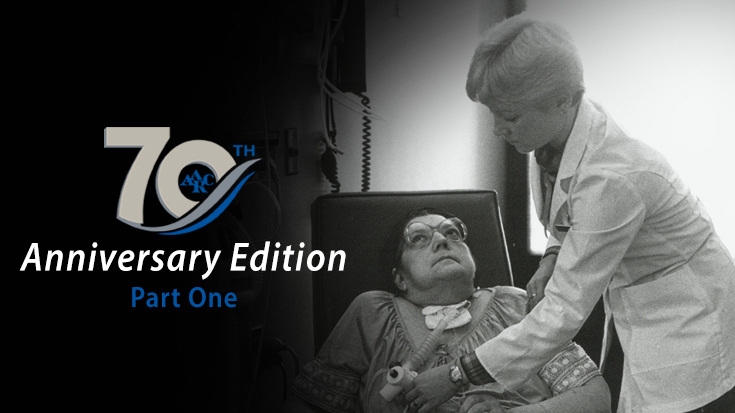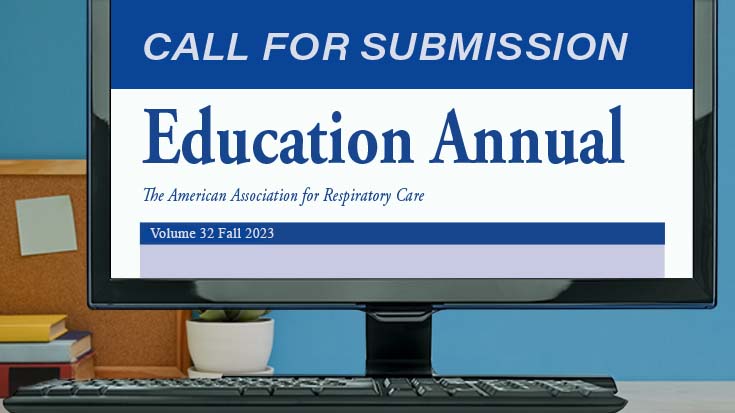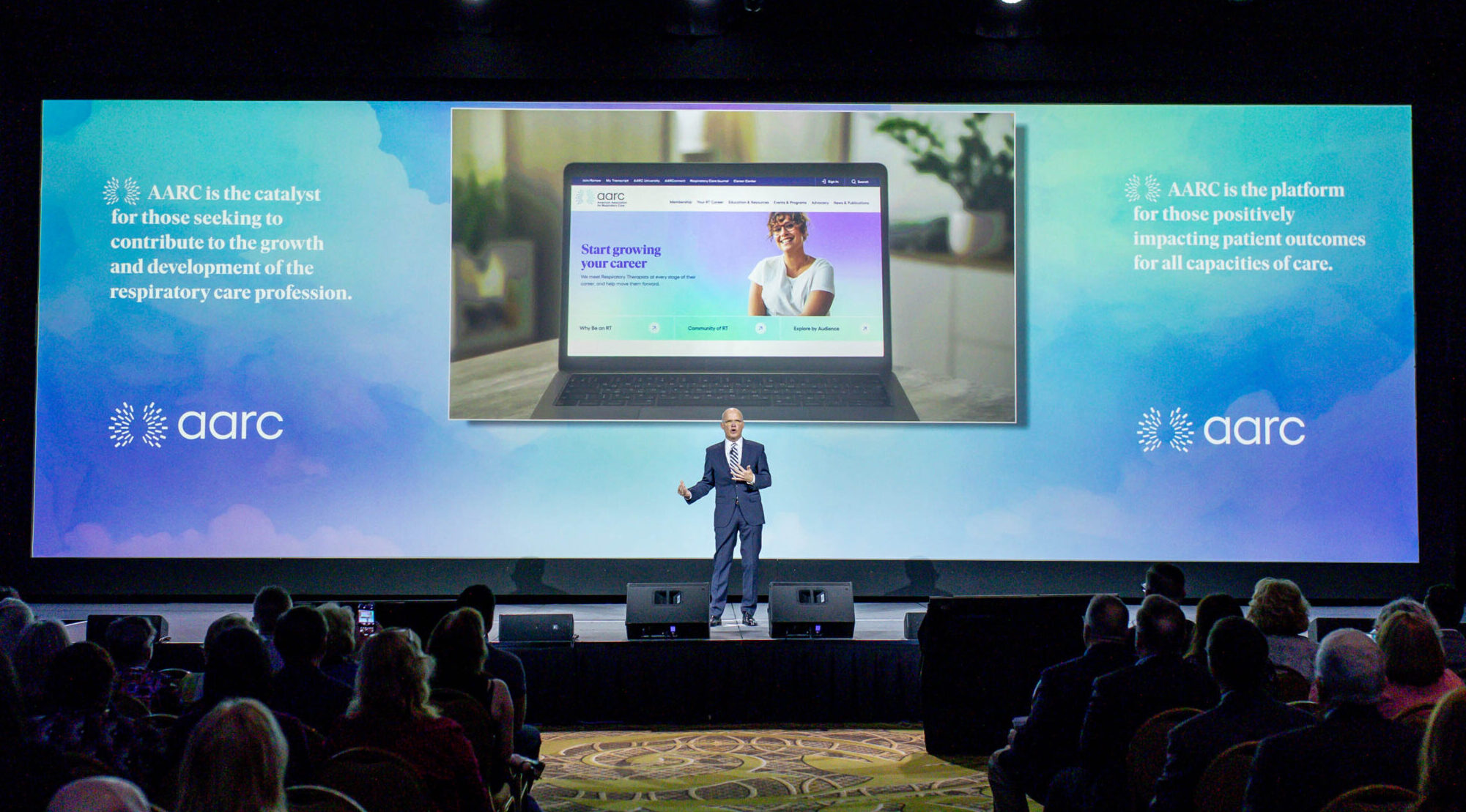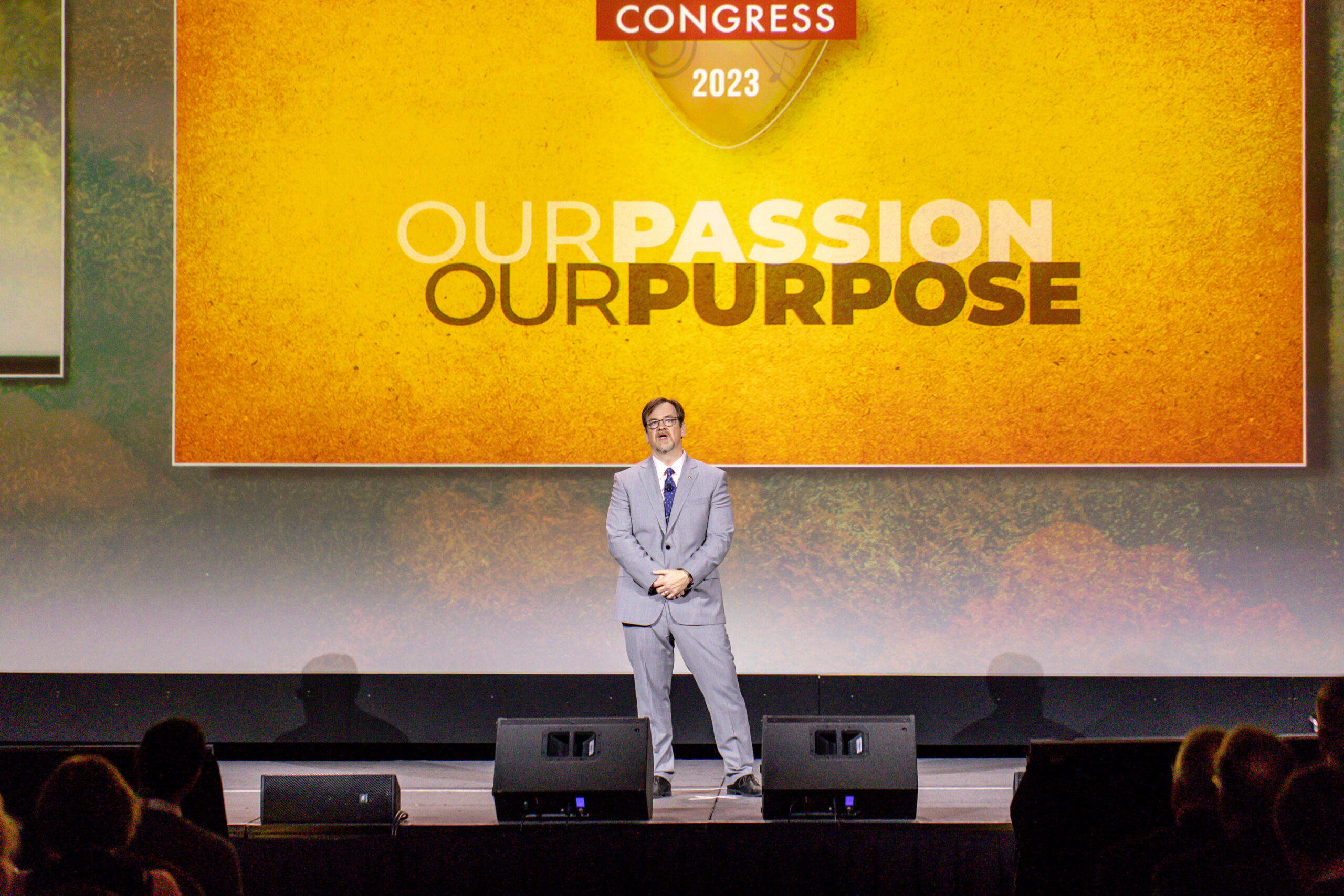
As we get ready to celebrate our 70th anniversary on Saturday, AARC members share their take on how things have changed in the clinical arena over their time in the profession.
When Cathy Bitsche, EdS, RRT-NPS, entered respiratory care some 40 years ago, respiratory medications consisted of bronchosol, isuprel, and mucomyst. “That was it,” she says.
IPPB was the big thing when Michael Holbert, RRT, RPFT, started out. So was delivering huge tidal breaths to ventilated patients and aggressive suction and saline lavage. Smoking was allowed in hospitals too. “More than once I was asked to deliver a treatment later so the subject could finish his cigarette,” he says.
Ice tents filled with ice that would condense and drip water on the floor were commonplace when Doug Masini, EdD, RRT-ACCS, AE-C, FCCP, FAARC, entered the field. “My first job came with a bird machine and a mop,” he says.
Ruth Karales, BS, RRT, recalls the days when PFT equipment took up an entire room and therapists would spend a good 30-40 minutes analyzing the graphs and determining the predicteds for each patient. “No computer measured your volumes, seconds, etc.,” she says. “The technician did it all, slide rule in hand.”
Gail Dutcher, RRT, AE-C, RPFT, can remember the first time surfactant was used on preemies in her facility. “Kids that had chest tubes and months on the vent were now living, off the vent, with less lung damage,” she says. “One of the companies paid RRTs $50 — came to the unit and everything — for their input on how we liked the marketing photos and slogans! Picture that now.”
Stephen Wehrman, RRT, remembers when pulse oximeters had to be rolled around on a cart. “When I started I got to see the first HP pulse oximeter. It was on a cart in the pulmonary lab and weighed about 40 lbs.,” he says. “The probe was the size of your hand and fastened to your ear with a large strap around your head.”
Read More Incredible Changes in Respiratory Care
The top six
Those are just a few of the recollections we received when we asked long-time RTs to tell us what they think have been the top five clinical changes in the field during their years in the profession.
So, what was the overall verdict? After sorting through all the input, here’s our list — in no particular order — and with one more added in for good measure.
- Noninvasive Ventilation: Patients with everything from an acute exacerbation of COPD to severe neuromuscular disease have benefited from the development of NIV, including the PAP devices considered the gold standard treatment for people with OSA. “This mode spares many patients from mechanical ventilation and all the potential complications,” says Charles Nix, RRT.
- Mechanical Ventilation: Many RTs remember when mechanical ventilation meant the MA-1 or Ohio 560. Today we have a wide range of ventilators and ventilator modes to optimize the delivery of mechanical breaths, and strategies like lung protective ventilation, permissive hypercapnia, open lung ventilation, and ventilator weaning protocols are ensuring more patients have the chance to fully recover from the illnesses or injuries that made mechanical ventilation necessary in the first place. “ICU ventilation has advanced from mechanical parts and pieces to computer controlled high tech devices,” says Ed Coombs, MA, RRT-NPS, RRT-ACCS, FAARC. “Our understanding of lung protective strategies continues to evolve, as do clinical practices to shorten length of stay and improve morbidity and mortality.”
- Medications: The drug arsenal for respiratory therapists has grown exponentially over the past three or four decades, with new meds aimed at treating asthma, COPD, cystic fibrosis, and other lung conditions. The way these drugs are delivered has changed remarkably too, starting with the development of metered dose inhalers. “Respiratory medications have improved in being more specific to the disease process and at the same time reducing unwanted side effects,” says John Campbell, MA, MBA, RRT-NPS, RPFT, FACHE.
- Surfactant: Little has altered the landscape for premature infants as much as the ability to deliver surfactant to the immature lung. Infants who would previously have developed CLD or BPD or even died are now going home with a significantly better prognosis for a healthy life. “Miracle drug,” says Michael O’Dower, BA, RRT. “No more home baby vents for BPD. Well, a lot fewer. A lot less stress for families, and of course, better outcomes for the child.”
- Pulse Oximetry: Before this technology came on the scene, oxygenation could only be measured with blood gases, and that was a labor-intensive process that could only be performed at limited intervals during the patient’s care. The ability to measure oxygenation with a bedside device made it much easier for clinicians to make timely changes in treatment. “As the electronics grew smaller, the application grew larger, and more patients received better care, with untold numbers of lives saved because somebody could monitor oxygenation with a number,” says Patrick Evans, RRT
- Computerization: Therapists who got into respiratory care in the 1970s or before remember a time when “computers” were gigantic pieces of equipment humming away in obscure locations. The advent of the personal computer brought the device into our everyday lives, and as the technology improved, ultimately into just about everything in our everyday lives as well — including all of the medical technology used in hospitals today. “Microprocessors/computers have changed everything we touch,” says Martha Huddelson, BSRC, RRT-ACCS, AE-C. “That would certainly be my number one top clinical development of our time.”
Email newsroom@aarc.org with questions or comments, we’d love to hear from you.

















